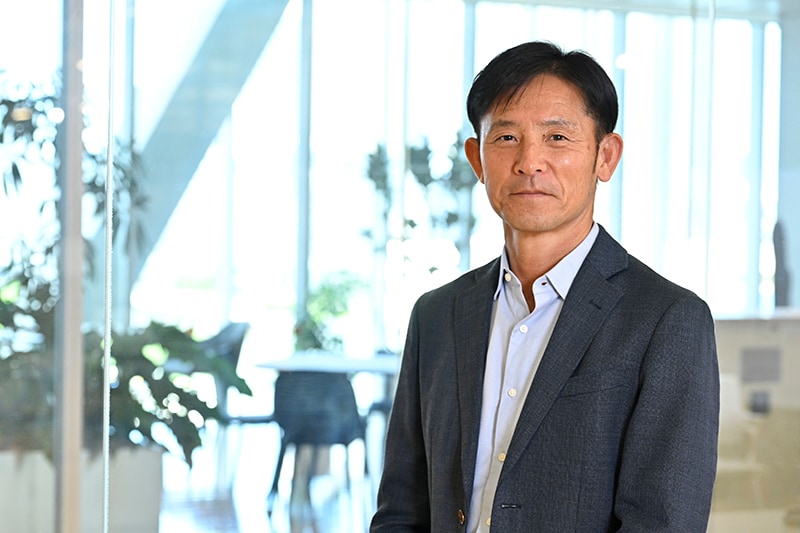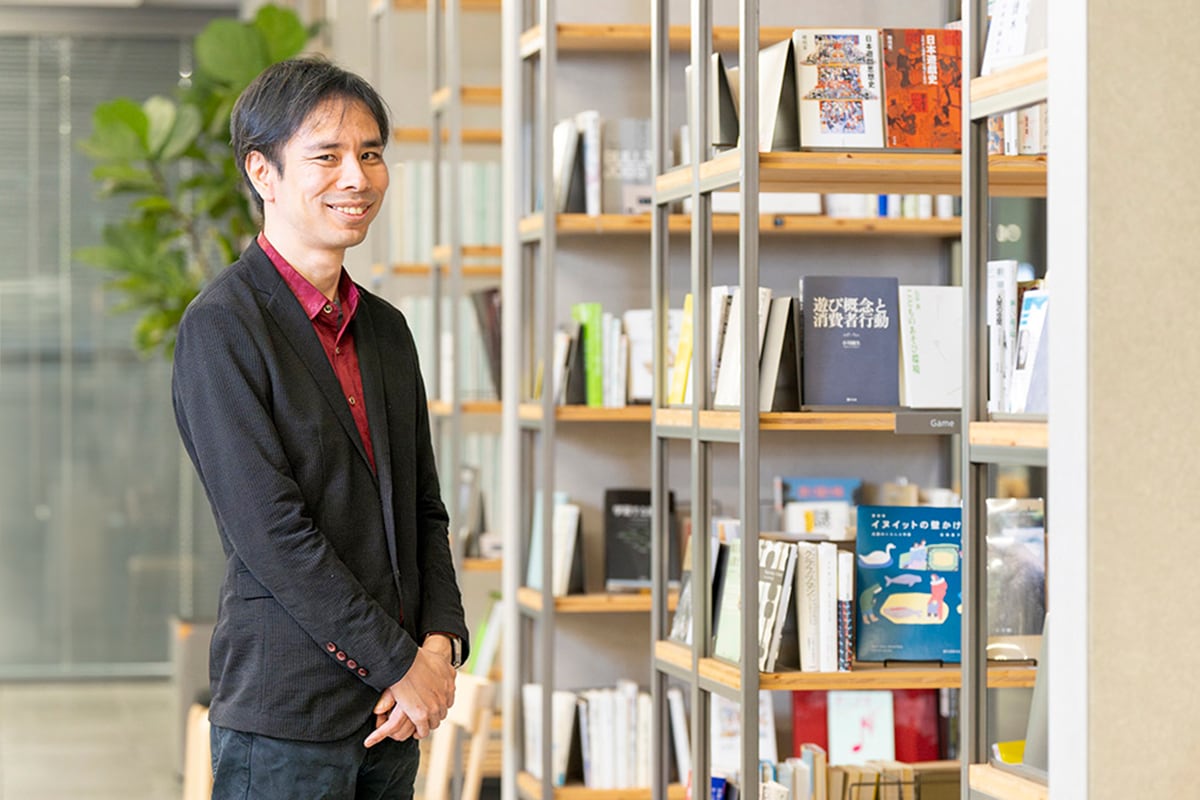People
Video transcript
Sony ESG/ Technology Briefing "Sony's Technology Initiatives" Sony Corporation Executive Deputy President Toru Katsumoto
Sep 20, 2020

Hello, everyone. I am Toru Katsumoto. Last year, we held Technology Day for the first time as a trial event to introduce Sony’s technology. Today, I will give an update on Technology Day as well as speak on the ways that technology is contributing to the Sony Group’s diverse portfolio of businesses.
Technology is a key element of both Sony’s Purpose and its Identity as "a creative entertainment company with a solid foundation in technology." In addition, Technology is one of Sony’s two most important material topics that support long- term value creation, along with Employees.

While Sony operates a diverse portfolio of businesses, People are at the center of each and every business, as relayed in Sony’s corporate direction of "getting closer to people."
Based on this management direction, Sony is working to develop technology that will help us get closer to what motivates people, that is, what motivates our creators and users.

Following the digitalization of content, our technologies accumulated by the electronics and image sensor businesses have been found to be useful across all business areas, including games, pictures, music and financial services. For example, the high-definition video technology realized through TV and camera development is also utilized in game and movie content production.
The Sony Group's diverse business portfolio has made it possible to connect engineers with the sites of each business, accelerate the development and evolution of technology, and generate true synergies in each business domain. I believe that this is a huge strength of the Sony Group that is not shared by any other company.

Going forward, we plan to further enhance our topics for R&D in the areas of entertainment and finance. To that end, for example in the area of entertainment, we have established R&D centers in places such as Culver City in the US, where Sony Pictures Entertainment Inc is headquartered, in order to accelerate collaboration between creators and engineers on the frontlines of production.
Approximately 10% of Sony R&D’s annual expenses of 500 billion yen are used for corporate R&D. This ratio is consistently maintained each year from the perspective of financial discipline, and the topics for R&D are managed according to priority, including new, important tops. In addition, we have allocated 5% or less of corporate R&D expenses to long-term basic research topics so that we can respond flexibly to changes in trends in the medium to long term.
From the perspective of employees, we are also promoting the acceleration of measures with a strong emphasis on diversity and globalization. Since last year, we have engaged in dynamic rotation for key positions between our offices in Japan and overseas.
Furthermore, we established a new R&D center in India in July of this year in order to attract more talented employees. In China, we opened a new facility in Shenzhen in addition to our pre-existing facility in Beijing. We have established English as the common language for all of these facilities, and English will be used, as a rule, as the language for all important meetings and meeting records to ensure a system that allows immediate sharing with all team members globally.
Through these R&D activities, we will to contribute to society and the global environment, in addition to contributing to Sony’s diverse businesses that I mentioned earlier.

Due to the recent spread of COVID-19 around the world, there is growing awareness regarding the safety and security of people and the sustainability of the environment. Furthermore, people can no longer gather in groups, and there are limitations on producing high-quality film and music content as well as enjoying live performances and sporting events.

Technology will used as a method to solve these issues.
This effort will be centered on 3R Technology, which refers to Reality and Real-time technology, which Sony has focused on until now, with the added element of Remote.

Reality technology, which is indicated by high sound and video quality, has been an area of expertise for Sony until now. Additionally, we are creating new value by realizing in Real-time the entire process of understanding an input and then delivering it to the output side as information.
I believe there will be a huge amount of value provided by realizing Reality and Real- time technologies Remotely.
Now, I will introduce a real example of 3R Technology at work.
This very presentation, in fact, is being filmed using a virtual production lab that we just launched this August. Through capturing and recording the picture and 3D data of film studio sets as well as real locations, a composite image is faithfully reproduced on the Crystal LED display in the background. When combined with live actors as well as physical props, it is possible to create "Reality" images and video that are indistinguishable from footage filmed on real sets or on location.
In the world of music, we have developed a technology called "360 Virtual Mixing Environment," which allows music engineers to recreate the studio sound mixing environment at home by utilizing virtual sound technology for headphones as well stereophonic technology such as environment and individual optimization. With this technology, it is now possible to remotely create sounds for target sound environments such as movie theaters. This technology was used for the sound mixing for the feature film Ghostbusters: Afterlife, which is set to be released next year, and received high praise from the sound engineer who worked with it.
Using volumetric capture technology that was shown off last year during Technology Day, we held the "Ikimono-gakari Volumetric LIVE" live music broadcast this August. One large evolution for this broadcast was that everything was performed in Real- time, including modeling, rendering and streaming. Having accomplished this feat of connecting everything in Real-time, we are one step closer to our larger goal of transmitting space itself.
In the future, we aim to make it possible to see and speak to people in remote areas while shifting perspectives in Real-time, and provide a video experience that allows users to share a common space and exchange ideas remotely.

AI is a technology that can be applied and contribute to all of the Sony Group’s business areas, including sensing, financial services and entertainment.
Rather than competing in the area of developing new AI algorithms themselves, Sony’s R&D efforts regarding AI are primarily focused on determining which AI algorithms are the best and easiest to use depending on each area and the limitations of the time, and figuring out applications for Sony’s diverse businesses.
At the same time, Sony has started early-stage development on autonomous intelligence and deep learning, which are the mechanisms by which AI systems learn and develop autonomously, and these new technologies have started to attract attention as the next-generation in AI technology.

As Yoshida-san explained at the start of this briefing, in May we announced an intelligent vision sensor equipped with an AI processing function. By enabling high- speed edge AI processing and extracting only the necessary data, we can achieve such results as reduced power consumption a communication costs and a shortened data transfer delay time.
In the same month, we also announced a collaboration with Microsoft on smart camera solutions, and aim to provide new customer value by developing an optimal system that combines edge AI processing and cloud platforms.

The Sony Group is also engaged in technology development to address a number of social issues.
We independently developed KIRAVIA Dyes, a material for fluorescent reagents used to analyze the characteristics of tissues and cells, and are currently providing licenses and selling reagents to other companies. Reagents using KIRAVIA Dyes are expected to be used in life science fields such as regenerative medicine and immunology using flow cytometers.
Since entering the flow cytometry business in 2010, we have commercialized various flow cytometers, such as models that apply Blu-ray Disc technology. Recently, the Vanderbilt Medical Center in the US used the Sony SH800 cell sorter to successfully identify cells that produce antibodies capable of binding the novel coronavirus, which could potentially lead to the development of a vaccine or treatment for the virus. Going forward, we will continue to contribute to society by leveraging Sony's technologies in the life science field, such as through accelerating research in advanced medicine.

Yoshida-san spoke of creating entertainment in space, and this is another example of a contribution by Sony’s technology, specifically as it utilizes the technologies of imaging, sensing, and communication.
As another example, we jointly developed SOLISS (Small Optical Link for International Space Station), a compact optical communication device that enables long-distance optical communication, with JAXA (Japan Aerospace Exploration Agency). SOLISS, which uses Sony’s optical disc technology, underwent testing in orbit at the International Space Station and succeeded in two-way optical communication with optical ground stations as well as in transmitting high-quality images.
In order to realize a sustainable society, it is necessary to prevent inconvenient situations and reduce waste while improving efficiency. To that end, it will be necessary to conduct sensing on various subjects on the earth and transmit necessary information back to society at low cost through AI processing. Through utilizing such technology as Sony’s high-function low-energy SoC, AI tools, and LPWA (low power wide area networks, we will work to move from the coexistence of "people to people" to the coexistence of "people and the environment that surrounds them."

Today I spoke about the technology’s contribution to the Sony Group’s diverse portfolio of business.
The details of the specific projects that I discussed today as well as other initiatives involving technology are published on Sony’s Technology Site as part of Sony’s Technology 2020.

Please look forward to the further evolution of Sony as a "creative entertainment company with a solid foundation in technology."
Thank you for your attention.




